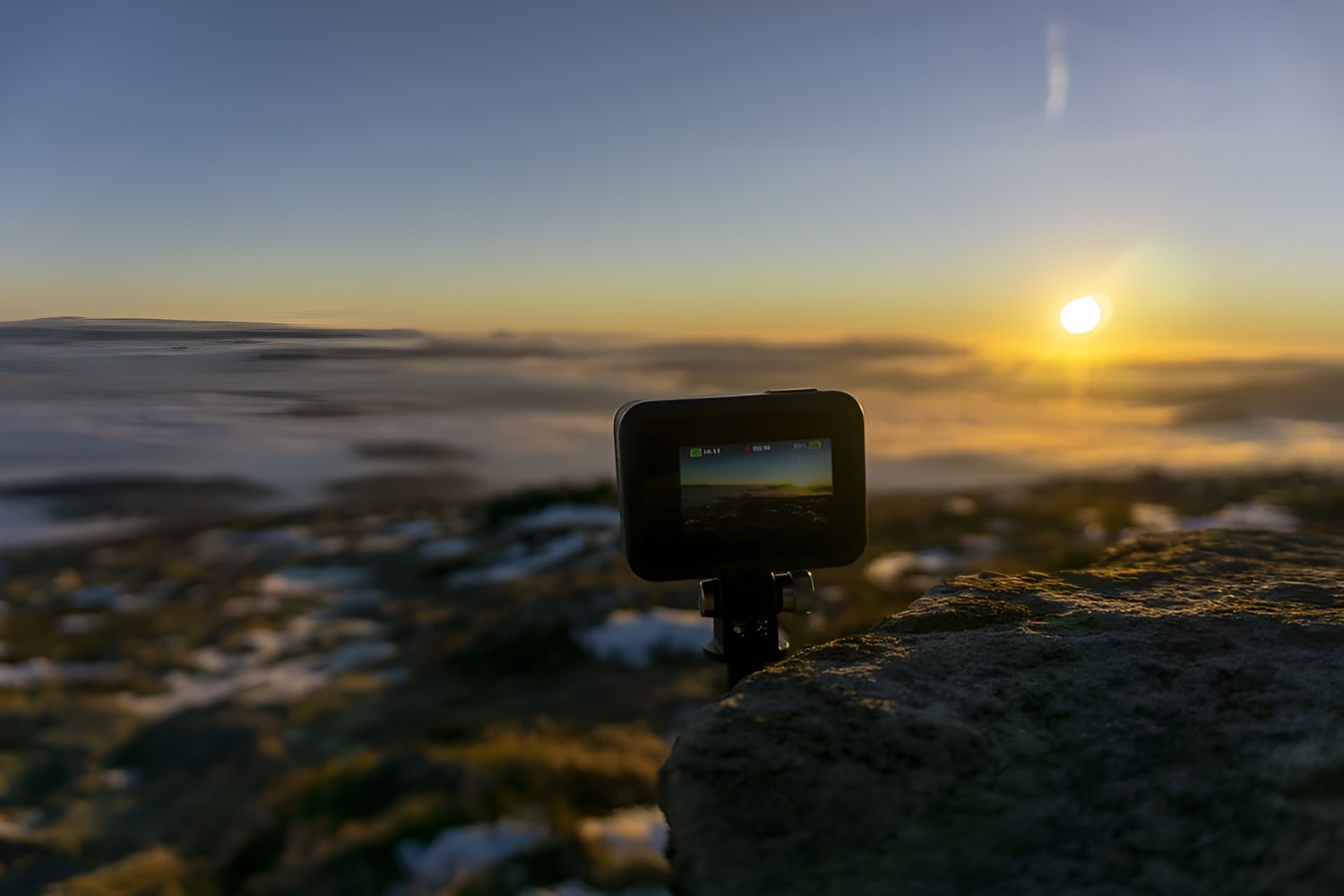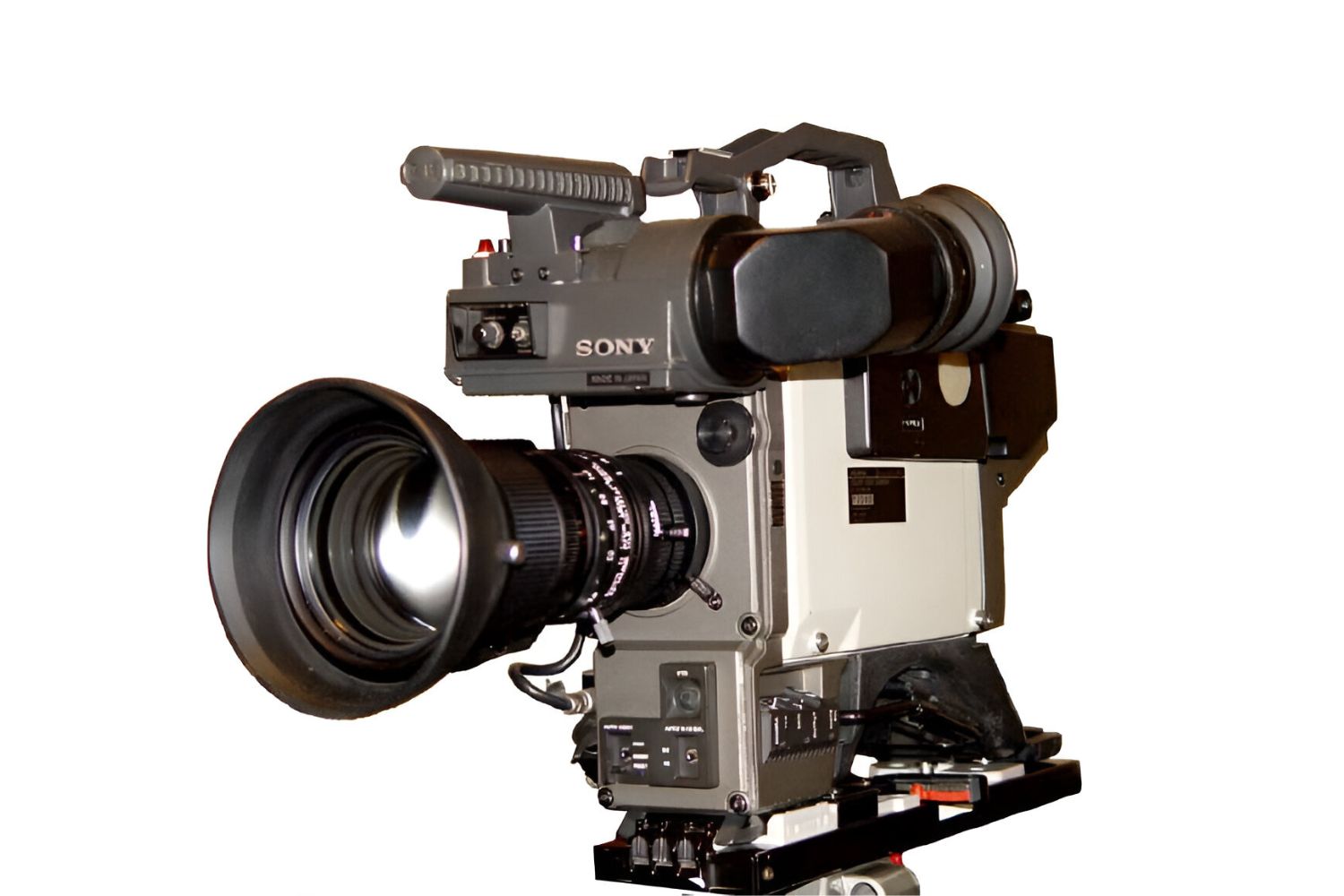Introduction
Introduction
Welcome to the thrilling world of action cameras! These compact, rugged devices have revolutionized the way we capture high-octane activities and adventures. From adrenaline-pumping extreme sports to breathtaking outdoor escapades, action cameras have become indispensable tools for documenting the most daring and awe-inspiring moments of our lives.
With their durable, waterproof designs and wide-angle lenses, action cameras excel at capturing dynamic, fast-paced scenes in stunning high definition. Whether it’s surfing monstrous waves, hurtling down mountain bike trails, or skydiving from dizzying heights, these cameras are engineered to withstand the rigors of intense action while delivering breathtaking footage.
Join us as we embark on a captivating journey through the history, evolution, and impact of action cameras. We’ll delve into the early development of these innovative devices, explore the invention of the first action camera, trace their evolution and popularization, and examine their profound impact on sports and adventure photography. By the end of this exploration, you’ll gain a newfound appreciation for the remarkable technology that has forever changed the way we relive and share our most exhilarating experiences.
Early Development of Action Cameras
Early Development of Action Cameras
The inception of action cameras can be traced back to the early 1960s when adventurous individuals and sports enthusiasts sought innovative ways to capture their exploits. Initially, bulky and cumbersome equipment such as 16mm film cameras were used, but they were far from ideal for the dynamic and rugged nature of extreme sports. As technology advanced, smaller and more portable video recording devices emerged, paving the way for the development of the first true action cameras.
In the 1980s and 1990s, the concept of wearable and mountable cameras gained momentum, driven by the growing demand for hands-free and immersive recording solutions. Early prototypes were often custom-built and rudimentary, incorporating basic video recording capabilities and rudimentary mounting systems. These early pioneers laid the groundwork for the compact, high-performance action cameras that would later revolutionize the way we capture action-packed moments.
Advancements in miniaturization and digital imaging technologies in the early 2000s marked a significant turning point in the evolution of action cameras. This era saw the emergence of compact digital cameras capable of capturing high-quality video in challenging environments, fueling the development of purpose-built action cameras tailored to the needs of extreme sports enthusiasts and adventure seekers.
Throughout this period of early development, key features such as ruggedized designs, waterproof housings, wide-angle lenses, and shock-resistant construction became defining characteristics of action cameras. These innovations were instrumental in enabling users to seamlessly record their high-energy pursuits without compromising on durability or image quality.
As the capabilities of action cameras continued to evolve, so did their popularity among athletes, outdoor enthusiasts, and content creators. The early development phase set the stage for the groundbreaking inventions and technological advancements that would propel action cameras into the mainstream, forever changing the landscape of sports and adventure photography.
Invention of the First Action Camera
Invention of the First Action Camera
The birth of the first true action camera can be attributed to the visionary ingenuity of a pioneering individual whose innovative spirit transformed the way we document high-energy activities. In the early 2000s, entrepreneur and avid outdoor enthusiast Nick Woodman conceptualized a compact, wearable camera that would capture immersive footage of his surfing adventures. This groundbreaking vision laid the foundation for what would eventually become the iconic GoPro camera.
Woodman’s quest to develop a versatile and durable camera capable of withstanding the demanding conditions of action sports led to the creation of the inaugural GoPro model. The original GoPro Hero 35mm was introduced in 2004, marking a pivotal moment in the history of action cameras. With its robust, waterproof housing and wide-angle lens, the GoPro Hero offered users a portable and rugged solution for capturing high-definition video and still images in challenging environments.
What set the GoPro apart from traditional cameras was its innovative mounting system, which allowed users to securely attach the camera to helmets, surfboards, bikes, and various gear, providing a unique perspective that was previously unattainable. This versatility and adaptability made the GoPro a game-changer in the realm of action photography, empowering users to unleash their creativity and capture breathtaking moments from exhilarating vantage points.
Driven by Woodman’s relentless pursuit of innovation and a deep understanding of the needs of adrenaline junkies and outdoor enthusiasts, the GoPro brand rapidly gained traction within the action sports community. The release of subsequent GoPro models, each boasting enhanced features and capabilities, solidified the brand’s position as a trailblazer in the action camera market.
Woodman’s entrepreneurial vision and unwavering commitment to pushing the boundaries of camera technology culminated in the widespread adoption of action cameras across diverse recreational and professional domains. The invention of the first GoPro not only revolutionized the way we capture extreme sports and adventures but also inspired a new era of immersive, first-person visual storytelling, empowering individuals to share their most exhilarating moments with the world.
Evolution and Popularization of Action Cameras
Evolution and Popularization of Action Cameras
The evolution of action cameras has been characterized by a relentless pursuit of technological advancements, driving unprecedented innovation and transforming the way we capture and share thrilling experiences. Following the trailblazing debut of the GoPro, the action camera landscape witnessed a rapid evolution, marked by a continuous stream of groundbreaking features and enhancements that propelled these devices to new heights of performance and versatility.
The transition from traditional film-based action cameras to digital formats revolutionized the industry, enabling users to capture high-definition video with unprecedented clarity and detail. This shift not only elevated the visual quality of action camera footage but also facilitated seamless editing and sharing of content, amplifying the impact of adrenaline-fueled moments.
As action cameras became more compact, lightweight, and user-friendly, they transcended their niche origins and gained widespread popularity among outdoor enthusiasts, athletes, filmmakers, and content creators. The integration of advanced stabilization technologies, such as electronic image stabilization (EIS) and gimbal systems, further elevated the visual appeal of action camera footage, delivering smooth, cinematic sequences even in the most dynamic and turbulent environments.
The advent of wireless connectivity and mobile app integration empowered users to remotely control their action cameras, preview footage in real-time, and effortlessly transfer content to their devices for immediate editing and sharing. This seamless integration with smartphones and other digital platforms accelerated the dissemination of captivating action camera content across social media, inspiring a global community of thrill-seekers and adventure enthusiasts.
The popularization of action cameras also spurred the development of a diverse ecosystem of accessories and mounting solutions, catering to a myriad of activities and environments. From chest harnesses and helmet mounts to underwater housings and drone compatibility, these accessories expanded the creative possibilities and utility of action cameras, enabling users to capture perspectives that were previously unattainable.
The proliferation of action cameras in mainstream culture has transcended traditional sports and adventure photography, permeating industries such as vlogging, travel documentation, and even professional filmmaking. The compact form factor, rugged design, and unparalleled versatility of action cameras have positioned them as indispensable tools for capturing immersive, first-person perspectives and visually engaging content across a spectrum of creative pursuits.
Impact of Action Cameras on Sports and Adventure Photography
Impact of Action Cameras on Sports and Adventure Photography
The advent of action cameras has profoundly reshaped the landscape of sports and adventure photography, ushering in a new era of immersive storytelling and visual documentation. These compact yet powerful devices have transcended the confines of traditional photography, empowering athletes, adventurers, and content creators to capture exhilarating moments from unprecedented perspectives and share their experiences with a global audience.
One of the most significant impacts of action cameras on sports and adventure photography is the democratization of visual storytelling. Previously, capturing high-quality, dynamic footage of extreme sports and outdoor pursuits required specialized equipment, extensive technical expertise, and often a dedicated film crew. Action cameras have democratized the process, enabling individuals of all skill levels to produce compelling, cinematic-quality content with unparalleled ease and accessibility.
The immersive and visceral nature of action camera footage has revolutionized the way audiences experience and engage with sports and adventure content. Viewers are transported into the heart of the action, experiencing the adrenaline, triumphs, and challenges alongside the athletes and adventurers. This heightened sense of immersion has redefined the storytelling potential of sports and adventure photography, fostering deeper emotional connections and a more visceral understanding of the human experience in extreme environments.
Furthermore, action cameras have catalyzed a paradigm shift in the visual language of sports and adventure photography. By capturing perspectives that were previously unattainable, such as first-person viewpoints from athletes or point-of-view angles from within the midst of the action, these cameras have expanded the creative palette of photographers and filmmakers. The result is a more diverse, dynamic, and visually compelling portrayal of sports and adventure, enriching the narrative and visual impact of the content.
The ubiquitous presence of action cameras has also influenced the way athletes and adventurers perceive and approach their own experiences. The ability to review and analyze footage from training sessions, competitions, or expeditions provides invaluable insights, enabling individuals to refine their techniques, enhance their performance, and share their knowledge with a global community of enthusiasts and aspiring athletes.
Ultimately, the impact of action cameras on sports and adventure photography extends beyond the realm of visual documentation; it has redefined the art of storytelling, elevated the accessibility of immersive experiences, and empowered individuals to capture and share the most exhilarating moments of their lives with unparalleled creativity and authenticity.

























